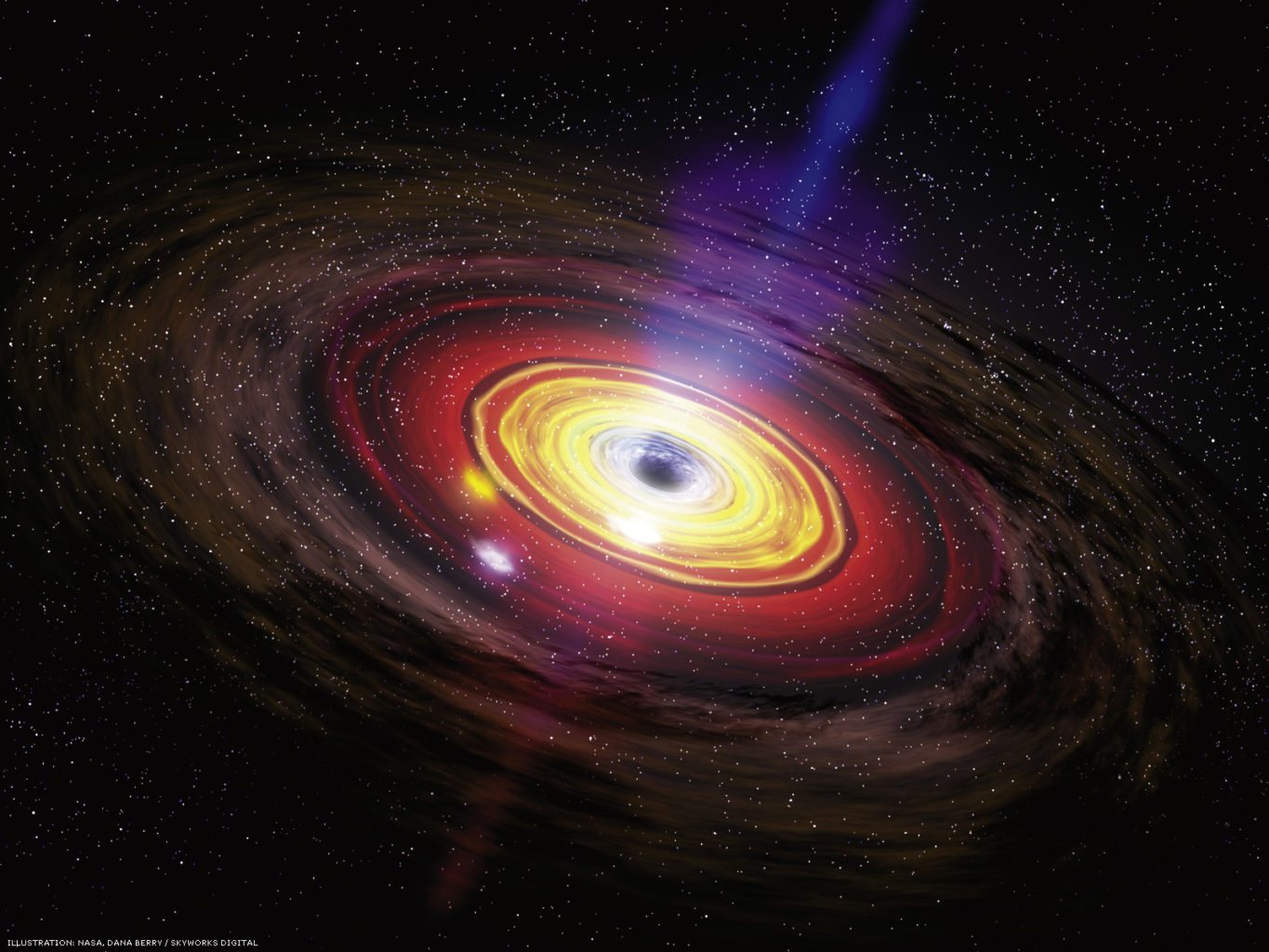Shining a new light onto black holes
Black holes are the remains of large stars (or other similarly sized objects), created at the end of their lifetimes; These collapsed stellar remnants consist of matter that is so incredibly dense that nothing, not even light, should be able to escape beyond its boundary, known as the event horizon.
In 1974, Stephen Hawking predicted that black holes should in fact faintly emit some particles, which make up what is now known as Hawking radiation. These particles would originally be part of a particle-antiparticle pair: if one of the pair became stuck in the event horizon then the other particle would be free to escape the black hole.
A team at the Technion, the Israel Institute of Technology, have recorded what has been described as ‘the first clear cut evidence of Hawking-related effects’, referring to the predicted Hawking radiation from black holes. They observed phonons (a quantum particle representing a vibration, such as sound) leaving a laboratory-based model black hole, which they claim is analogous to this effect.
Why, then, was a model black hole required? The problem comes from our limited observational power, as the effect would be too weak to record in large black holes, and the black holes that would have stronger Hawking radiation are too small to see!
The model used in this experiment consists of a Bose-Einstein condensate (a state of matter, like solid or liquid), which can be used to simulate the event horizon, by accelerating part of it to above the speed of sound. This results in two boundaries within the material, similar to an inner and outer horizon, which cannot be crossed by the phonons due to their differing speeds, in the same way as particles are trapped within the event horizon by the gravity of the black hole.
The two ‘horizons’ in the model are necessary to increase the phonon signal to a detectable level; they amplify the signal in much the same way as a laser amplifies light. The particles are bounced back and forth between two surfaces (mirrors for a laser, the speed boundaries described above for this experiment) and more particles are created or released every time they impact on these surfaces. The resultant increase in the number of phonons allowed them to be detected by the team in Israel.
This is not the first time that Hawking radiation has been claimed to have been shown; a team at the University of Milan used a model black hole where photons (light particles) were trapped by laser pulses in 2010. Their model, however, was questioned by some as to whether it truly represented the physics of an event horizon.
In contrast, the response to this result has been mostly positive, with some describing it as a ‘game changer’, but some have more reservations, warning that ‘the effect occurring in a BEC does not prove it would occur in black holes’. How long it will be before Stephen Hawking’s prediction can be tested on a black hole itself, only time will tell!

Comments